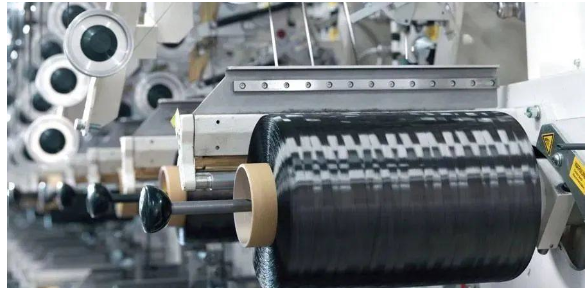At present, automotive lightweighting is mainly achieved through material lightweighting, structural lightweighting and process lightweighting, which interact with each other and influence each other. Compared with structural and technological lightweighting, the effect of material lightweighting is more immediate. However, it is not easy to make a breakthrough in material lightweighting, as it is necessary to take into account light weight and high strength, and at the same time control the cost.

“Spring does not lose weight, summer is sad”, recently some people have started their “weight loss plan”. For many women who love beauty, weight loss is a lifetime “career”. But you may not know, and these women love beauty, like the car “thin” footsteps also never stop. By using some new lightweight materials, it has become the trend of the world automobile development to reduce the overall quality of the car as much as possible to improve its dynamics, reduce fuel consumption and exhaust pollution under the premise of ensuring the strength and safety performance of the car.
At the “2023 International Automotive New Materials Conference” held in Wuhu, Anhui Province recently, experts focused on the lightweighting of automotive materials and other issues and held a lively discussion.
Lightweight materials need to balance weight, performance and cost
Safety, low-carbon and environmental protection have become the mainstream trend of the global automotive industry in the 21st century, and the introduction of China’s “double carbon” policy has accelerated the process of low-carbon development of automobiles.
“The reduction of vehicle mass can effectively reduce energy consumption, so the lightweighting of automobiles has also received attention and development in China.” Dr. Meng Xianming, chief expert in the field of lightweighting from the Automotive Engineering Research Institute of China Automotive Technology Research Center Co. In particular, new energy vehicles are the top priority for the development of China’s automotive industry. New energy vehicles equipped with “three electric” systems and a large number of intelligent devices have a more urgent and realistic demand for lightweighting compared with traditional vehicles. In addition, under the “mileage anxiety” and “cost reduction demand”, new energy vehicles also put forward higher requirements for vehicle lightweighting.
At present, automotive lightweighting is mainly achieved through material lightweighting, structural lightweighting and process lightweighting, which interact with each other and influence each other. “Compared with the structure and process of lightweighting, the effect of material lightweighting is more immediate and can greatly drive the development of lightweighting process and structure.” Meng Xianming believes.
However, it is not easy to make a breakthrough in material lightweighting, taking into account light weight and high strength, while also controlling costs. In the “strict requirements”, can enter the “final round” of automotive lightweight materials based on the type of material can be divided into lightweight metal materials and lightweight non-metallic materials two categories.
Lightweight metal materials are mainly ultra-high strength steel and light alloy materials.
Among them, ultra-high-strength steel materials can reduce the thickness of parts and components to ensure the structural strength of parts and vehicles to achieve the effect of automotive lightweight, is widely used in the body of the main load-bearing parts such as A/B/C column, longitudinal beam and door sills and other key load-bearing parts. “But to expand the application scenario of ultra-high strength steel materials need further research in springback control, hydrogen delayed fracture characteristics and other aspects to improve its application performance and scenario.” Meng Xianming said.
Automotive light alloy materials are mainly aluminum and magnesium alloys. With high strength, easy forming and processing, and good corrosion resistance and recyclability, aluminum alloy is one of the most cost-effective lightweight materials in the automotive manufacturing industry, and is widely used in engine manufacturing, wheel hubs, subframes and sub-load bearing structural parts. However, the disadvantage is that there is a high scrap rate in the molding process, and the raw material price of aluminum alloy is high, and the connection process threshold is high. As the second largest automotive light alloy material, magnesium alloy has lower density and better light weight performance than aluminum alloy, currently mainly used in wheel rims, instrument panels and other parts, but its further wide range of applications still need to solve the corrosion and weathering problems.
Lightweight non-metallic materials are mainly high-performance plastics and composite materials, which are mainly distributed in interior parts and some exterior coverings in automobiles.
High-performance plastics are mainly PP, PA6, PA66, PU and other engineering plastics and blended plastics, widely used in the center console, instrument panel and door guards and other interior areas, these materials account for less mass, so there is less room for lightweighting, more through the modified design to enhance its tactile, VOC, antibacterial and other functional characteristics.
Automotive composite materials are currently mainly glass fiber and carbon fiber composites, which can replace the original steel coverings in body coverings involving pedestrian protection as well as tailgate and other parts.

“The specific strength and specific modulus of carbon fiber composites are 3-5 times higher than traditional metal materials, which is one of the most ideal lightweight materials and is expected to be widely used in the field of body structure strengthening and secondary load-bearing parts lightweighting.” Meng Xianming introduced, but due to the high cost of raw carbon fiber filaments and immature molding process, it is still difficult to be used in the automotive industry on a large scale.











